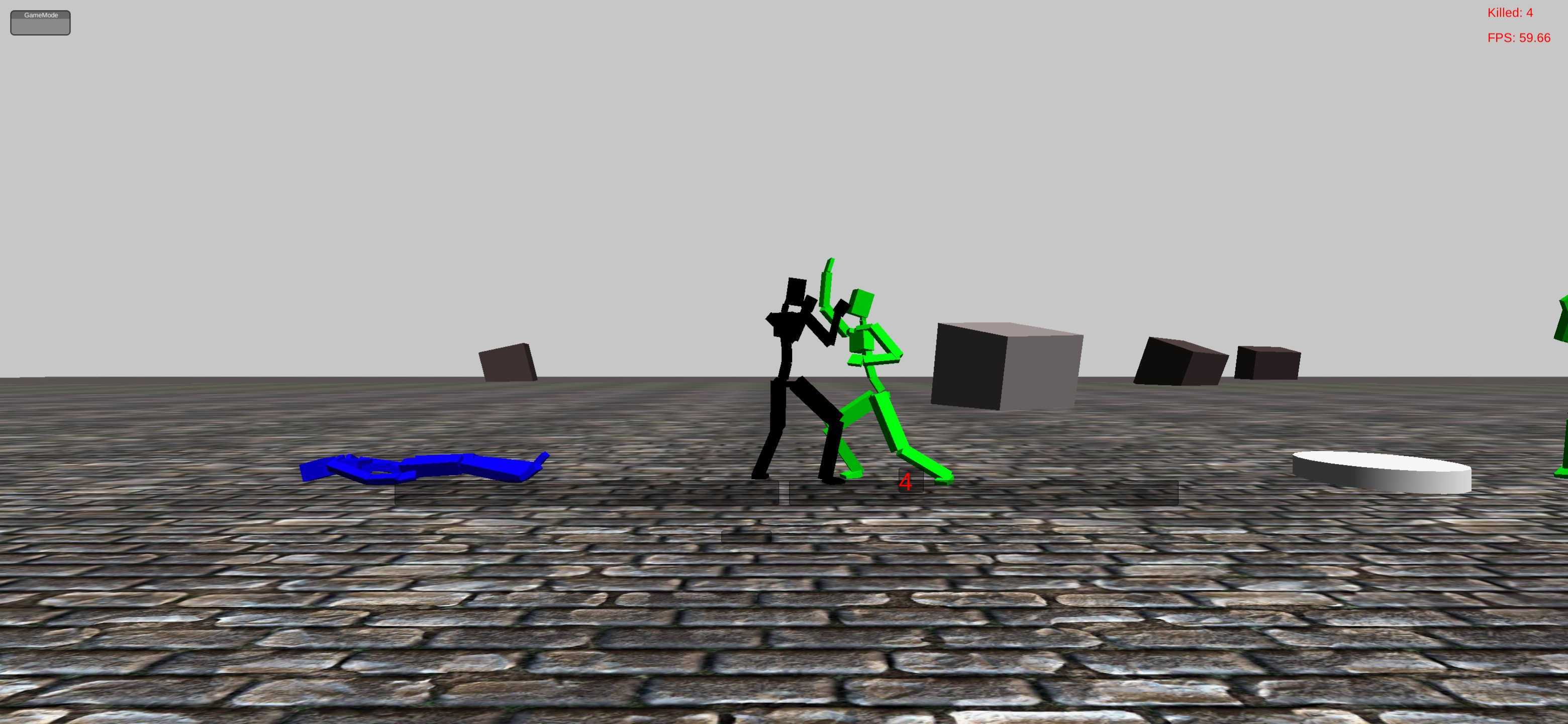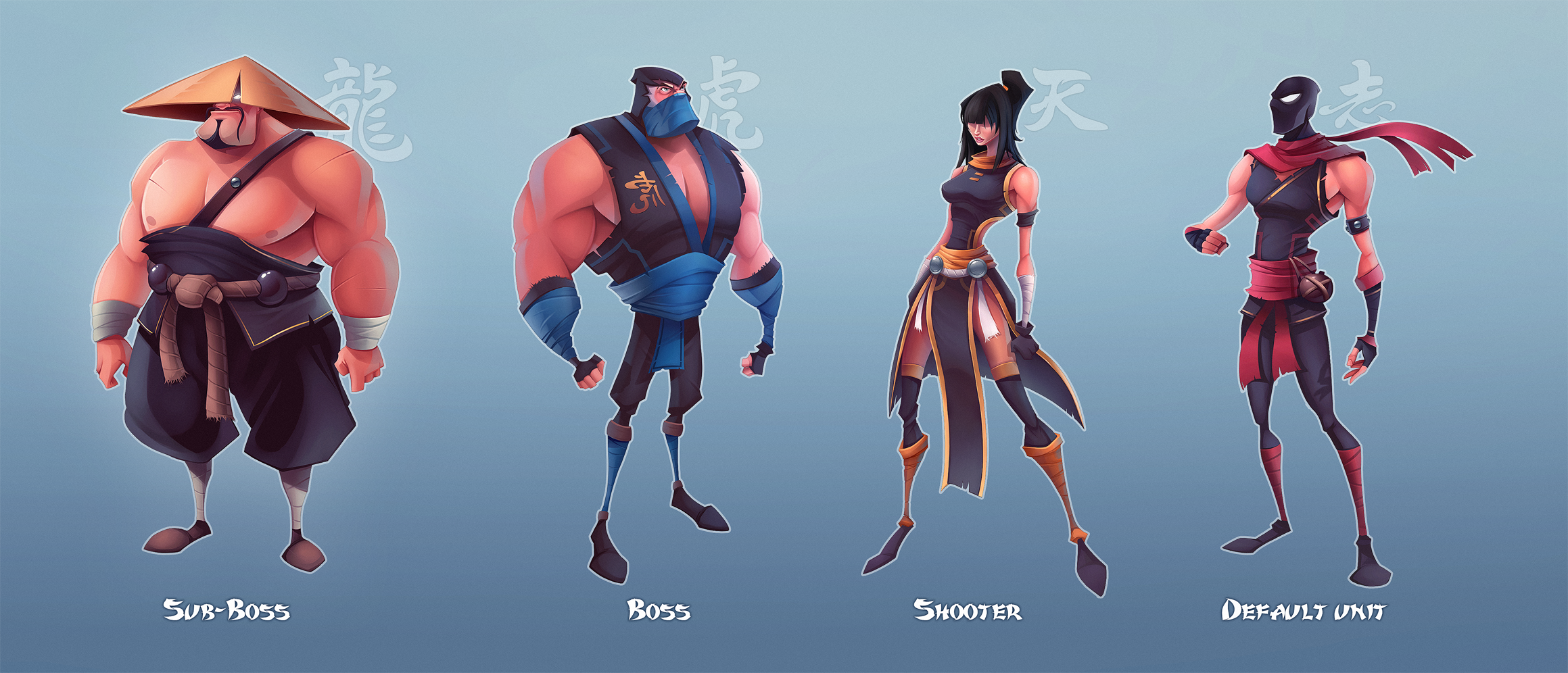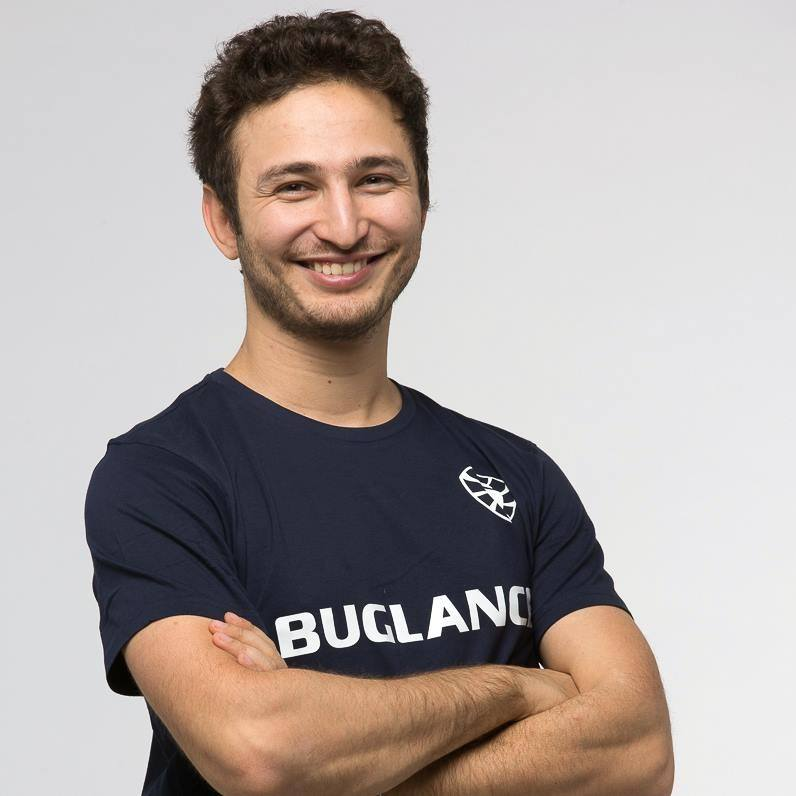Research
The idea of Fatal Fight did not come just from anywhere. Before understanding what game to develop, we needed to research the existing gaps in the global mobile game market. For that, we followed several steps.
First, we looked for the most searched mobile games on Google Play Store. Turned out, the top 3 were:
- Puzzle Games
- Car Games
- Fighting Games
This helped us immensely in narrowing down our research. We played the most downloaded games from each category ourselves to figure out if those games meet users’ needs while also trying to figure out the challenges users were facing during gameplay.
As a result, Puzzle and Car Games had a wide range of mobile games with pretty nice UI/UX design and other characteristics. However, for the Fighting Games Category - the overall picture was quite different.
We were surprised to find out that there were very few games with satisfactory features. And we were not the only ones to think so - hundreds of users craved a much better experience in fighting games.
With more research into users' feedback, we understood the main reason why the problem occurred - it was the complexity of gameplay. Users found it difficult to punch, kick, jump, and do all sorts of moves separately or all at once on a smartphone.
And this is when we discovered a gold nugget to make us keep digging - mobile Fighting Games were not good enough for the users and did not meet their needs.
Moreover, according to Google Play Store search rankings the keyword “addictive games” was one of the top ones. Users wanted games that would excite them, make them want to come back for more, and do so on a daily basis. Here is the final conclusion we made:
“We need to create an enjoyable fighting game with easy-to-play gameplay that will retain users”
Based on the research, we decided that our game would not have complex gameplay. We had the idea to duplicate the gameplay of a PC fighting game on a mobile game. Although controversial, it came to us after exploring a PC game called "One Finger Death Punch".
In this game, the fighting was simply managed by clicking on the left and right mouse buttons. This type of gameplay was an absolute match to what we were envisioning in our mobile fighting game. As a result, we took it as a good case practice and added “Left” and “Right” taps on mobile as an alternative to the same thing on the mouse.
Although this gameplay served as a good case practice for us - there wasn't much else to get inspired by. Even the name of the game was screaming “I am the name of the game that no one ever will remember”. We understood that there probably was never a decent marketing strategy set up for this game.
With our first prototype, we wanted to make sure that the gameplay fit our users' needs. The graphics were not our main focus at the time (as you can tell from the screenshot below), rather we focused on the interaction between users and the game, and if it was comfortably managed.

Winning the Google Play Store Optimization
Naming is another important point to take into account while developing a mobile game. It needs to be easy to remember and tailored to Play Store Optimization. The reason why we named our game “Fatal Fight” was the popular game “Mortal Kombat”. Yes, the game that won the admiration of billions was an inspiration for us in many ways.
Back then (in 2015 for those, who might have forgotten) there was no mobile version of Mortal Kombat. However, again the keyword “Mortal Kombat” had high rankings in Google Play. This means a lot of people were searching for this game in app stores, but could not find it.
The truth is: If SEO (or Play Store Optimization) cannot find the exact keyword, it always looks for synonyms.
Based on that, we decided to use synonyms for the words “Mortal” and “Combat” and combine them. Eventually, the name "Fatal Fight" was born.
We knew that the audience looking for Mortal Combat on the store would end up finding Fatal Fight. Although that felt like a big responsibility to the Mortal Combat lovers, we were confident that they would appreciate our universal mobile fighting game.
Of course, we were also inspired by the graphics of Mortal Combat and their characters like Lui Kang, Raiden, and Kung Lao - which, certainly, helped us meet the original game's fans' expectations.

Once finished with all that, we had one thing in our mind: “We want to go global”.
Soft-launch
Before opening up to the whole world, we made a soft-launch. Soft-launch is testing your product in a market that is less interesting for your business and is definitely not the final target. The reason is building up a feedback loop where you get the reviews from the users while developing the product according to the users’ needs.
Another thing that needs to be tracked during this period is the following key metrics in the Play Store:
- LTV — Lifetime Value
- ARPU — Average Revenue Per User
- ARPPU — Average Revenue Per Paying User
LTV metric is the one that evaluates the average revenue that a single customer brings throughout his/her lifespan. Returning users to your app (in other words those who do not delete games right after the first try) are of huge interest to the Play Store. Active users bring the revenue through advertisement featuring in the apps through AdMob (which is the product of Google too). This is where the increment of ARPU metrics happen as well as those of ARPPU. While tracking these metrics, we could evaluate whether our game development was going in the right direction. The better metrics, the higher probability that your app will appear on the first page of Google Play Store.
We launched the game in Azerbaijan where we aimed to get as much feedback as possible. This was the way we wanted to fix all the bugs and be better prepared for the market that we considered as a target one. As a result, we fixed all major bugs in the app and got a 4.8 ranking in the Play Store.
The soft-launch stage could finish there, but we decided not to. We entered another alternative market — Russia. Although this soft-launch would make us consider aspects like the differences in cultures and user habits, we went after one thing - the scale. In Russia in 2015, the number of smartphone users was around 51.3 million. This market was an amazing opportunity for us to test further and bigger.
In a few weeks, after launching the game in the new market, we started to receive negative reviews while losing traffic. All of them was regarding one thing:
Most of the Russian users did not have a Facebook account where they needed to invite their friends or were not willing to pay $1 (one of these was required to proceed to pass to the next stage once they reached the 10th stage).
We realized that we needed to come up with something universal at this stage of the game. We replaced Facebook invitations to «gain 30 starts during the first 10 stages and be able to pass to the next stages once reached the 10th one” kind of solution.
As a result of all these iterations with soft-launching, we got pretty high metrics in the Play Store that impacted our Play Store Optimization
Google Play Store gives your product a ranking based on the ranking you had in other countries where you had already launched. So if your soft-launch in Germany was successful with high rankings and positive reviews, the game would automatically have a good ranking once you launched globally.
Wise choice of Operating System
You might notice that so far in the article I mentioned everything about Android and its Play Store - that is not by accident.
Usually, developers first launch mobile apps on iOS OS. The argument behind it is that the majority of people are iOS users or the fact that the purchasing power of this particular segment is higher rather than that Android users have. We questioned those statistics because for us it seemed like a myth.
We compared the metrics Average Revenue Per Paying User and Average Revenue Per User. For both operating systems it was the same amount. In our case, the app weight of Fatal Fight was heavy and would only work on flagship smartphones that anyways cost a lot.
Here are a few other reasons why we consciously choose Android over iOS:
Market Share. Sensor Tower reports that the Google Play Store pulled in approximately 75.7 billion first-time apps installed worldwide in 2018. Comparatively, the App Store only drove 29.6 billion.
Fast process. The updates on Android are being approved faster than on IOS. When giving our first build to IOS it took the game 3 months to be added to the App Store.
The difference in algorithms. Google Play Store is more generous with organic traffic. If you have built a great app, it will reward you with organic traffic - in iOS - not so much. You need to buy traffic for money. For a long time, making apps popular through incentivized traffic was the leading strategy for Apple App Store. It involves some negatives including low lifetime value for the users. When users are incentivized by a reward, they are more likely to install your app without actually wanting it. This often makes it easier for them to uninstall your app after a few days. We wanted users to authentically choose us. Users who choose to involve themselves with the app due to personal interest — was the priority both for our team and apparently for Android. This is why we love Google Play Store over Apple App Store.
Going global
When we finally published Fatal Fight on iOS, Apple featured us in the “Top new games'' category. It was not just a matter of luck. The game was developed using the Unity 3d engine, so we were using the same code for both platforms. The secret was the whole journey that this product passed with Android. The huge amount of Android users we were able to test the app with allowed us to launch a much better and polished version of the game in the App Store.
Famous British blogger Deji also featured the game in his “Paintball Challenge” video on YouTube. Right after that, we were in top rankings in the USA and UK.
Now that we were in both stores, going global and growing bigger - our aim was to continue improving our product based on feedback, remaining agile, and keeping the high rankings. We were pretty successful in the beginning. However, there were some bugs we could not fix.
Once we started receiving more feedback, all users had the same issue - " I cannot hear the music and the sounds". These reports came from Samsung device users only. We had several Samsung devices in the house. There were no issues with the sound in these devices. Then we noticed another pattern. Apparently, this feedback came only from one Samsung device users - namely Galaxy Tab 2. Eventually, we bought the device, reproduced the bug, and fixed it - users would no longer have that issue.
Unfortunately, that wasn't the end of it - a major issue occurred with the new update. All of our users lost their game progress - no matter the number of stages - it all crashed.
Imagine losing the progress of a game where you spent your time, energy, and also money on digital goods. In other words, millions of users had to give up on the mobile game that already became a part of their lifestyle.
After 3 years in the market, we sold “Fatal Fight” to ITech Media Solutions in Estonia. Later they entered the Chinese market and released it on taptap.com which was one of the biggest Android mobile apps markets in the country. Fatal Fight became the number 1 most downloaded app on taptap.com.
Even when it seemed like all the risks were minimized, occasionally, there would still be major issues. But - do not get discouraged! While reflecting on our long journey with Fatal Fight, I - as a CEO, realized that if there was a platform to test all types of devices - any game could succeed.
The realization was a turning point for me and an inspiration for my next startup.
I have built Buglance to help other developers to release better mobile apps. It includes a network of 50K testers worldwide representing 10K+ unique devices. Here you are free to choose the type of device, country, demographics to test your app to make sure it works best for your audience. If we had Buglance at the time of creating Fatal Fight, it would have saved us a whole lot of time, money, and energy. In other words, we built it so you would not have to make the same mistakes and could launch the next million install game.

